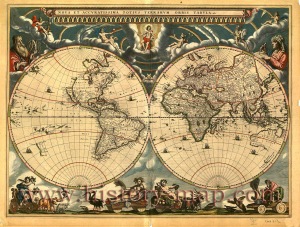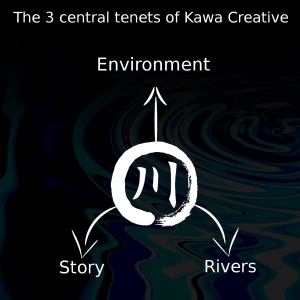As a child I loved drawing maps. I found it exciting to think that I could create whole worlds with just a pencil and paper. I would draw roads and islands and cities. I would spend hours in the attic of my parent’s house, hidden away and creating worlds to be explored. Putting together Kawa Creative has been, in some way, similar to this process. We have used the river at every turn, we have made plans and looked at different structures that we might put in place – and…
…it has taken longer than I expected to arrive at this point.
Here —> .
Why? Why is it that some start ups seem to happen in a matter of weeks, whilst other are carved out over months and years?
Brand building applications enable new businesses to go from concept to launch in a matter of hours (in theory.) Not so for us. Looking back over the development process that has been integral to the formation of Kawa Creative I recognise that we have been true to our use of the model. Kawa Creative has been developed according to the principles of the river metaphor; we have used the longitudinal aspect, the course of the river, to help us understand where we are in our process of development. We have used the lateral aspect, the cross section with boulders and driftwood, that we are so familiar with, to identify points of flow, barriers and opportunities. This has been a process of learning about our own development in order to apply our understanding of the river to the projects that we are now beginning to deliver.
I have previously reflected on the fact that the beginning of a river is not always a pretty, well defined spring in the ground, bubbling forth from the rocks and stating quite clearly “I am here.” Although this can be the case, and in the context of this piece this would represent those new businesses that are well defined and instant in the market place. usually these “rivers” are product or outcome orientated, and adhere to some kind of working formula. However, some rivers emerge from wet upland areas as nothing more than an area of boggy ground. Only when there is a change in the gradient of the landscape does the water begin to flow. In order for this to happen the water must accumulate.
Healing Messages was our pilot programme, our spring in the ground, we are now looking ahead to delivering our next project which will build on what we ave learned so far and enable us to start creating a portfolio of projects and activities that can be tailored to individual and collective needs. Through this development project we have identified three distinct areas that we will deliver on, these are the three central tenets of Kawa Creative:
These three principles carry with them all the work that we have carried out over the past two and half years, as well as the last six years I have spent exploring the river. We have distilled our thinking down to a very simple structure that can be adjusted and moulded to meet the needs of the participants.
Of course, as a new business, we have also been learning about the technical aspects of running a company, we have been learning about ourselves, about our relationships (both personal and professional), and we have been dealing with all the other things that life will throw your way. If you are thinking of setting up in private practice or in a role emerging area (such as Arts in Health) then I would say do not rush. Learn to time your decisions and trust your intuition, because these are your ideas and you are the expert on your own personal and professional development. Avoid the pressure that the business world sometimes applies to “make it happen,” because our prime concern is not profit: our prime concern is getting it right for our partners and beneficiaries. When we are productive, professional and effective then the renumeration will occur. This philosophy will not bring instant results, but it will create a firm bed of knowledge, ideas and a focussed commitment to the projects that you undertake.
This river is beginning to flow more steadily now, we have accumulated a volume of water and the change in the landscape has enabled us to find a direction, now we must run with this early progress, and allow the river to establish itself as it flows towards new projects, towards an emergence back into the profession of Occupational Therapy and towards the WFOT 2014 Congress in Yokohama.
I have often stated that to truly understand the Kawa framework, one must become an explorer and see what is in there (and out there.) I had thought that the last six years had been an exploration of the Kawa environment, but I was wrong: all I have been doing up until now is looking at maps.
Now that I make this particular reflection I understand that we have been preparing. We have been poring over the charts, packing our equipment and planning our start. Now it is time to put on my explorer’s hat and coat and start the real adventure, because what we have achieved, and the reason it has taken “So Long,” is that the Metaphor has been transforming into a reality.
This, then, is my hypothesis:
The Kawa Model presents us with the opportunity to create a map, upon which we can plan our journey. The river provides us with a language which transcends cultural boundaries and enables knowledge exchange accross a variety of borders. The river allows us to make choices and decisions without the fear of failure, becuase within the poetical language of the river, within its perfect harmony of dynamic relationship, there can be no such thing as failure; only change and flow. Finally, the river enables us to transform these ideas into new realities which emerge as opportunities in our physical lives.
Just don’t try and rush it.
















 I enjoy following
I enjoy following 











